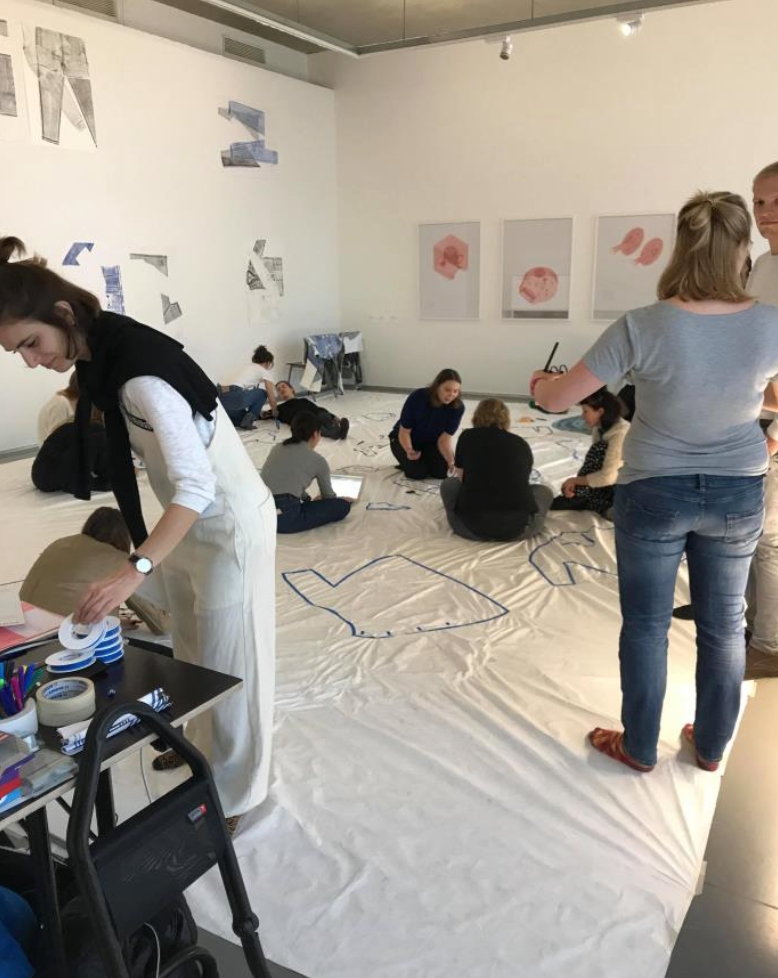Change the System through the Resilience of Creative Minds: A Work in Progress
 Manon van Hoeckel, The Boijmans Launderette (2017). Courtesy: Museum Boijmans Van Beuningen.
Manon van Hoeckel, The Boijmans Launderette (2017). Courtesy: Museum Boijmans Van Beuningen.
It has been already a couple of years since Museum Boijmans van Beuningen in Rotterdam started to host design-based art exhibitions emphasizing the innovative power of imagination. Besides its substantial collections of the old masters, the museum also wishes to initiate debates about the present issues and threats going around in our society, advocates the viewers to engage in conversations with artists about these topics.
Curated by Annemartine van Kesteren, Boijmans’ most recent temporary exhibition Change the System brings together projects and works by over fifty artists under three themes: scarcity, conflict, and plurality. On display are – washing machines, oil, sand, soup stock – objects with inconspicuous semblance that people don’t usually encounter in a museum or recognize as artistic.
The exhibition locates on the second floor of the 2003 Robbrecht and Daem extension which was commissioned by the museum direct Chirs Dercon to harmonize the rather hybrid architectural state at the time: having the original building designed by Van der Steur in 1934 with a classical museum typology, the Bodon’s expansion in 1972, and Hubert-Jan Henket’s Van Beuningen-de Vriese Pavilion in 1991. Robbrecht and Daem extension have a very narrow shape due to the nature of the architectural as to connect (squeeze in) the original buildings. The entire space is made up of three rectangular rooms connected by two hallways. Due to the limited available room for exhibiting, the works on display are mostly put only on one side of the rooms (to be honest there is not enough space to have two installations parallel on both sides). I was expecting that this exhibition is put here for a purpose: to change the conventional system of museum display. However, the answer I got from the curator was that the space was given – her team could not pick an exhibition space. So, they had to work around the limited area and make pragmatic decisions when positioning the works.
The blinds are always closed; no trace of natural light can be found. Therefore, ideally, one should be expected to fully concentrate on the displays as there is nothing else to distract attention in a limited and enclosed space. However, there is one thing that almost overshadows the displayed works: there were LED lights all over the place.
The light scenography in this exhibition is designed by Children of the Light (a collaboration of visual artists Christopher Gabriel and Arnout Hulskamp). In the line with the exhibition they “changed the system” by taking all of the original lights down, out of their normal positions on the ceiling. The arrangement of the lights looks as if they are specially designed to guide of the exhibiting route, and, at the same time, keep the distance between the visitors and the displays. Sadly, however, the dazzling lights make viewing rather difficult. In addition to the modified lighting system, Children of the light also designed two claustrophobics, mirror-lined transitional spaces connect the three rooms: one is a completely dark tunnel and one is a space filled with light. They form a transition between exhibition areas and themes and act as a reset button for the visitors.
To change the system – the scope of the subject itself is enormous. In what context are we discussing the system? In this exhibition, we see that the system can as big as the ecosystem which is facing threats such as the scarcity of raw materials. This is exemplified by Studio Wieki Somers’ vase Deepwater (2016) reflects on the catastrophic effect that human actions can have on nature. The work refers to the oil disaster in 2010 caused by the explosion of the drilling platform Deepwater Horizon.
 Elisa van Joolen, along with her master students from Artez, was on site collecting data from the visitors for her One-to-One project (work in progress) searching for the non-visible relationships and links in the fashion system. Courtesy: Museum Boijmans Van Beuningen.
Elisa van Joolen, along with her master students from Artez, was on site collecting data from the visitors for her One-to-One project (work in progress) searching for the non-visible relationships and links in the fashion system. Courtesy: Museum Boijmans Van Beuningen.
On the other hand, the system can refer to the social hierarchy between groups or individuals. Manon van Hoeckel’s In Limbo Embassy (2014) represents a vulnerable and invisible group in our society: asylum seekers who have exhausted all legal means. With the embassy, Manon van Hoeckel wants to call attention to this group so that they can have a voice, and a dialogue can arise between them and the documented population. She also creates the space in The Boijmans Launderette (2017) to initiate unexpected conversations between strangers, using the synchronized flows of the washing cycle to break the stereotypical silent and remote image of a museum.
Just like how a vast majority of the works on site are still shown in progress, the process to change the system is also a work in progress. It is a process that needs everyone’s participation. This exhibition is nicely attuned to a transdisciplinary approach, which is, perhaps, the zeitgeist of the 21st century. Artists establish dialogues between art and current topics through the resilience of creativity. They visualize new alternatives and fascinating perspectives. We, as spectators, are as well inspired and encouraged to take part in the process of change-making.
For those who come for Joie de vivre, they may not find the exhibition as satisfying as compared to all the masterpieces hung in the other rooms at Boijmans. But, if one admires the creative spirits whose forte is a matter of empowerment, one will for sure come away from the exhibition with a new-found inspiration.